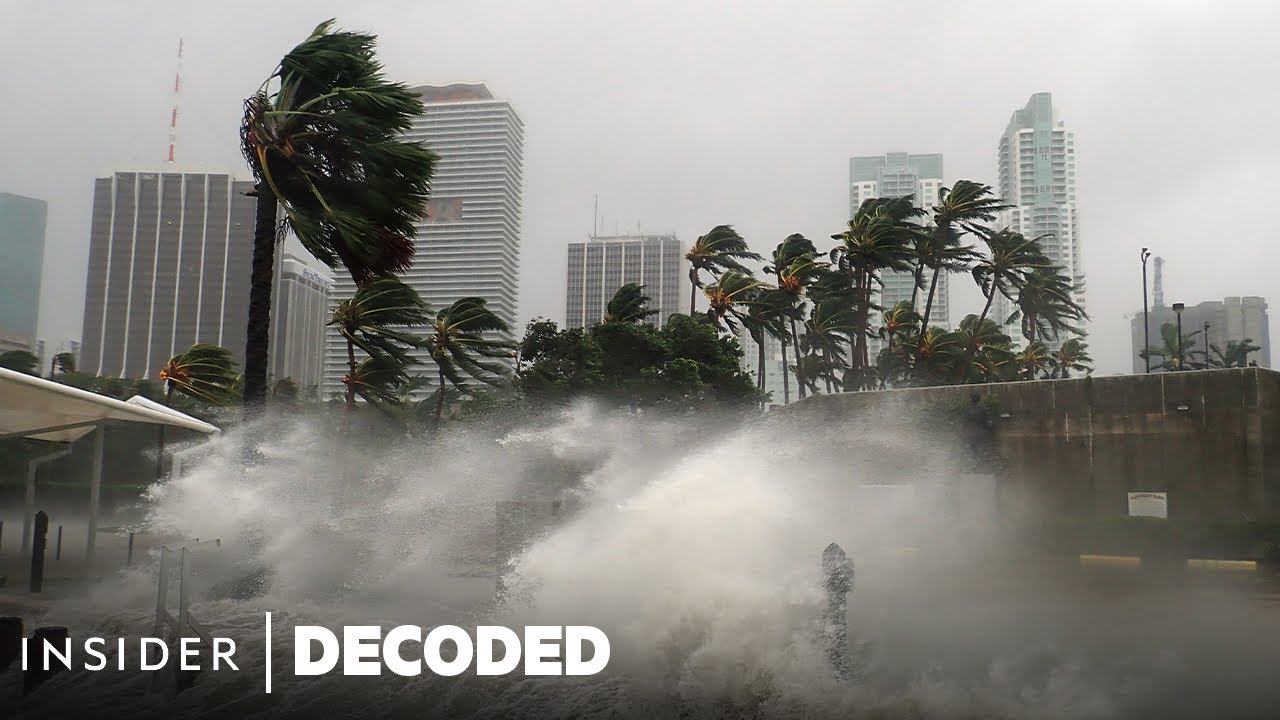What causes hurricanes? Hurricanes are powerful and destructive storms that capture our attention and curiosity. Understanding the factors that contribute to their formation is both fascinating and crucial. These natural phenomena are caused by a complex interplay of various elements, including warm ocean waters, strong winds, and atmospheric conditions. As the sun heats the ocean’s surface, water evaporates and rises, creating a warm and moist air mass. This warm air then begins to rotate due to the Earth’s rotation and the Coriolis effect, resulting in the formation of a low-pressure area. As more moist air rushes into this low-pressure zone, it starts to spiral and gain energy. Intensifying winds and evolving atmospheric conditions further contribute to the growth and organization of a hurricane. The immense power and destructive potential of these storms make them a subject of fascination and concern for researchers, meteorologists, and the general public alike. By studying the causes of hurricanes, scientists hope to improve their ability to predict and prepare for these natural disasters, ultimately minimizing their impact on human lives and infrastructure.

Factors that Contribute to the Formation of Hurricanes
| Factor | Description |
|---|---|
| Warm Ocean Temperatures | Hurricanes require sea surface temperatures of at least 80°F (27°C) to form and thrive. Warmer waters provide the necessary energy for their development and intensification. |
| Moisture | Adequate moisture in the lower atmosphere is crucial for hurricane formation. As warm air rises from the ocean’s surface, it cools and condenses, releasing latent heat that fuels the storm’s growth. |
| Coriolis Effect | The Coriolis effect, caused by the Earth’s rotation, plays a vital role in the organization and structure of hurricanes. It deflects the airflow, allowing storms to develop a distinct rotating pattern. |
| Low Vertical Wind Shear | For hurricanes to develop and maintain their strength, a low vertical wind shear environment is necessary. Wind shear refers to the change in wind direction or speed with height. High wind shear can disrupt the storm’s structure and hinder its formation. |
| Pre-existing Disturbances | Tropical disturbances, such as tropical waves or areas of low pressure, serve as initial triggers for hurricane formation. These disturbances provide a starting point for the storm to develop and strengthen. |
| Location | Hurricanes typically form in specific regions known as “tropical cyclone basins.” The most common areas are the Atlantic Basin, the Eastern Pacific Basin, and the Western Pacific Basin due to favorable environmental conditions for storm development. |
Unraveling the Mystery: The Surprising Origins and Growing Fury of Hurricanes
What Causes Hurricanes?
Hurricanes are one of nature’s most destructive forces. These violent storms can cause widespread damage and devastation. But have you ever wondered what causes a hurricane to form? In this article, we will explore the various factors that contribute to the formation of hurricanes.
Warm Ocean Waters
Warm ocean waters are the primary fuel for hurricanes. When the ocean’s surface temperature exceeds 80 degrees Fahrenheit, it provides the necessary heat and moisture to fuel the storm. The warm water evaporates, creating moist air that rises rapidly. As the warm, moist air rises, it creates an area of low pressure near the surface.
This low-pressure area pulls in more warm air from the surrounding areas, causing a cycle of rising warm air. This cycle continues and intensifies, forming the core of the hurricane. The warm ocean waters act as a continuous source of energy, allowing the hurricane to grow stronger and more powerful.
Rotation and Coriolis Effect
Rotation is another crucial factor in the formation of hurricanes. As the warm air rises, it begins to rotate due to the Earth’s rotation. In the Northern Hemisphere, hurricanes rotate counterclockwise, while in the Southern Hemisphere, they rotate clockwise.
The Coriolis effect, caused by the rotation of the Earth, influences the direction of the hurricane’s rotation. This effect deflects the air as it moves towards the center of the storm, causing it to rotate around a central eye. The Coriolis effect plays a vital role in the organization and structure of hurricanes.
Moisture and Instability
Another important factor in hurricane formation is the availability of moisture. As the warm air rises, it cools and condenses, forming clouds and releasing heat energy. The condensation process releases latent heat, which further fuels the storm.
The moisture in the air provides the necessary fuel for the hurricane, allowing it to continue to grow and intensify. The combination of warm ocean waters and abundant moisture creates a highly unstable atmosphere, which is favorable for the formation and development of hurricanes.
Low Wind Shear
Wind shear refers to the change in wind speed or direction with height. In the case of hurricanes, low wind shear is essential for their formation and maintenance. Strong wind shear can disrupt the vertical structure of the storm, preventing it from intensifying or maintaining its strength.
In a low wind shear environment, the warm air can rise vertically, allowing the storm to develop a well-defined eye and eyewall. This eye and eyewall structure is characteristic of a mature hurricane and is where the strongest winds and heaviest rainfall occur.
Location and Atmospheric Conditions
The location and atmospheric conditions also play a significant role in hurricane formation. Hurricanes typically form in tropical and subtropical regions, where the ocean waters are warm and the atmospheric conditions are favorable.
The warm ocean waters provide the initial energy for the storm, while the atmospheric conditions, such as high humidity and low wind shear, allow for the storm’s development and sustenance. These ideal conditions are often found in the Atlantic Ocean, Caribbean Sea, and Gulf of Mexico, where hurricanes are most common.
In Conclusion
Understanding the factors that cause hurricanes to form is crucial for predicting and preparing for these powerful storms. Warm ocean waters, rotation and the Coriolis effect, moisture and instability, low wind shear, and favorable atmospheric conditions all contribute to the formation and development of hurricanes.
By studying and monitoring these factors, meteorologists can better forecast the intensity and track of hurricanes, allowing communities to prepare and respond effectively. While hurricanes may be a natural phenomenon, knowledge and preparation are key in mitigating their impact and protecting lives and property.

